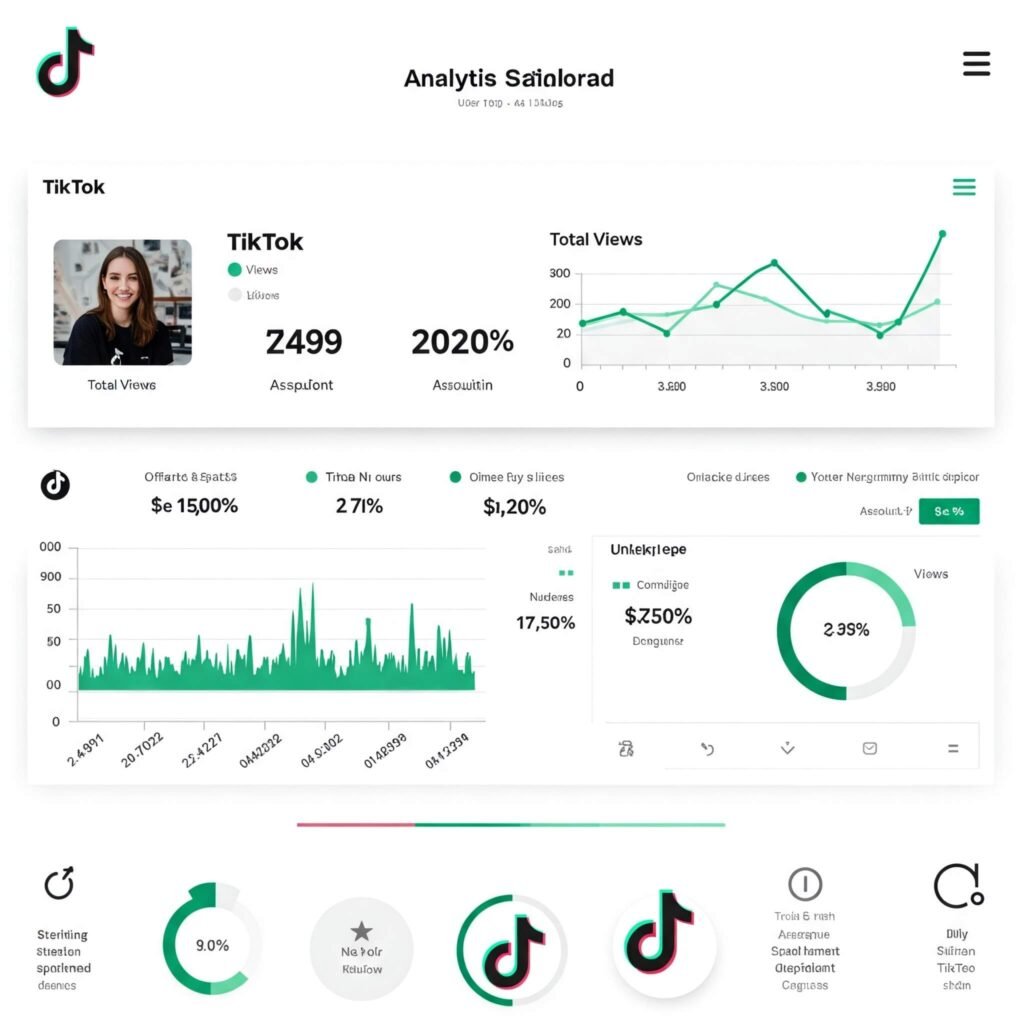Video Went Viral…….You ever post something online thinking, “Eh, maybe 12 people will see this—including my mom and my cousin who likes everything I post”? And then, somehow, two days later, you’re getting random DMs from strangers in Brazil asking if they can remix it? Yeah. That happened to me.
This is the case study (kinda fancy word for “story I’m about to overshare”) of how one random little video I made in my Queens apartment went viral in 48 hours. Spoiler: it wasn’t some genius marketing strategy. I didn’t sit down with a notebook and map out the “funnel” or whatever those LinkedIn hustle bros talk about. Honestly? I was just bored, half-delirious from too much iced coffee, and annoyed with my upstairs neighbor’s dog.
The Setup (a.k.a. How It Started with a Dumb Idea)
So it’s a Tuesday night. I’m on my couch, scrolling through TikTok like usual, when I see yet another “perfect aesthetic” morning routine video. You know the ones—pouring matcha in slow motion, making the bed like they’re about to invite Vogue over for a house tour, sunlight coming in like God Himself installed the lighting.
Meanwhile, my reality: I had mismatched socks on, a sink full of dishes, and the 7 train screeching outside my window. So I thought, what if I make the opposite of a morning routine video? Like, a brutally honest one.
Cue me:
- spilling coffee on my hoodie (didn’t even stage that, it just… happened),
- brushing my teeth while scrolling Instagram,
- trying to swat a fruit fly while pouring cereal.
I filmed all of this on my phone in, like, 15 minutes. Edited it in CapCut. Slapped on some trending audio (you know that one where it sounds motivational at first, then the bass drops into chaos? Perfect). And I posted it before bed, thinking nothing of it.
The First 12 Hours: “Okay, Weird…”
When I woke up, the video had like 3,000 views. Which, for me, was already wild. Normally my stuff sits around 200, maybe 500 if my aunt in Jersey shares it.
But then comments started rolling in:
- “Omg this is literally me.”
- “Why did you just expose my life??”
- “The fruit fly part sent me.”
It was small, but something felt different. People weren’t just watching—they were tagging their friends. That’s the secret sauce right there.
The Next 24 Hours: Boom.
By the time I got home from work the next day, my phone was blowing up like I’d just leaked the Avengers script. Notifications non-stop. The video hit 200k views. Then 500k. My cousin texted me, “Bro, you’re on my FYP and I didn’t even follow you yet.”
It’s hard to explain, but watching a video go viral in real time feels like watching a pot boil—except the pot explodes and now soup is all over your ceiling. Chaotic. Fun. Stressful.
I kept refreshing like a maniac. One minute it’s 800k views, then you blink, and it’s 1.2 million. I didn’t sleep much that night, not gonna lie.
Why Did This Video Go Viral?
I’ve thought about this a lot (because obviously, I tried to recreate it—spoiler, the next video flopped). Here’s what I think clicked:

- Relatability – Everyone’s sick of fake-perfect content. Me spilling cereal everywhere? That’s the universal human experience.
- Timing – I used trending audio that people were already searching for. Basically, I hopped on the moving train instead of trying to build my own.
- Length – It was 18 seconds. People watched it, laughed, and rewatched it. That loop factor is key.
- Comments drove it further – People tagging friends kept the cycle alive.
It wasn’t the best video I’ve ever made. Honestly, it was sloppy. But sometimes sloppy is what people actually want.
The Aftermath: 2 Million Views, Random DMs, and One Slight Crisis
By 48 hours in, the video had passed 2 million views. I had strangers following me, brands I’d never heard of sliding into my inbox, and even my high school lab partner commenting, “Yo, I remember when you wore Crocs to prom.” (unrelated but thanks, dude).
But here’s the funny part—when something goes viral, you immediately feel pressure. Like, do I suddenly have to become “the relatable morning routine guy”? Do I ride this wave or just… let it be?
I posted another video the next day, trying to capture the same vibe. It got maybe 2,000 views. A humbling reminder that virality is kinda like lightning—you can’t bottle it. You just enjoy the storm while it lasts.
Things I Learned from Accidentally Going Viral
Okay, let me sound wise for a second (just a second):
- Post the dumb idea. Seriously. The stuff you overthink for weeks usually flops. The stuff you make in 10 minutes? That’s the one.
- Engage with comments. I was replying like a maniac, joking back, keeping it alive. That mattered.
- Don’t chase virality too hard. It’ll drive you nuts. Just make things you’d want to watch.
- Keep snacks nearby. Because refreshing your phone for hours is hungry work.
Random Tangents (because my brain doesn’t do straight lines)
- Autocorrect changed “viral” to “vital” in one of my captions and honestly… maybe it was right. Going viral isn’t vital, but it feels like it when your phone won’t stop buzzing.
- My mom saw the video and said, “You should’ve cleaned your room before posting.” Thanks, mom.
- I still haven’t dealt with the fruit fly situation.
Case Study Wrap-Up (if we’re calling it that)

So yeah, this is the case study of how this video went viral in 48 hours. No blueprint. No marketing guru tips. Just me, a messy Queens apartment, and a lot of people apparently relating to fruit flies and spilled coffee.
Would I do it again? Absolutely. Can I guarantee it’ll happen again? Nope. But that’s the fun part, right? Virality is weird, unpredictable, and kinda addictive.
And if you’re sitting there overthinking your next post—don’t. Film the messy thing. Hit upload. Worst case, it gets 200 views. Best case, you’re suddenly international fruit fly guy.




